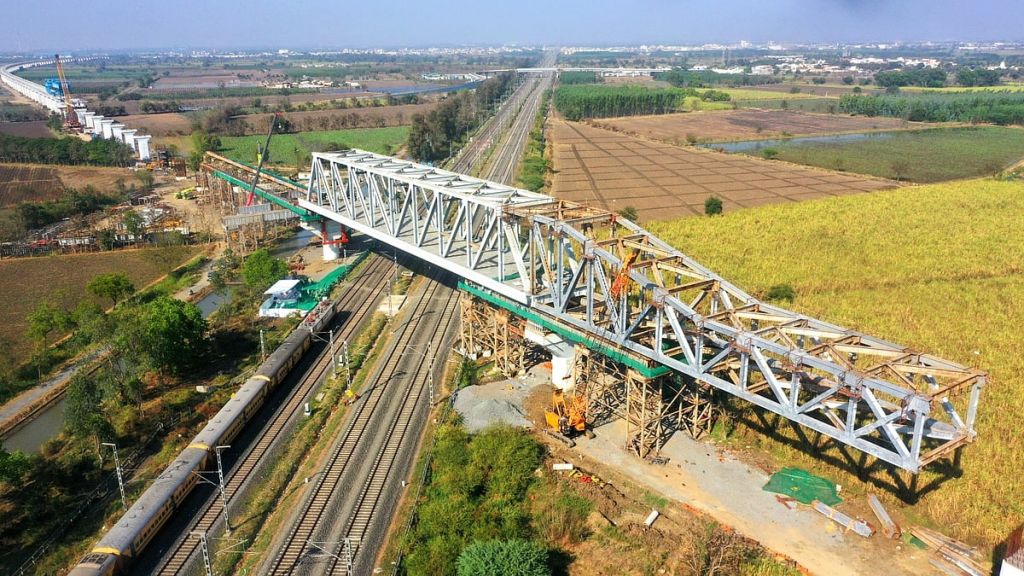
Mumbai: The National High-Speed Rail Corporation Limited (NHSRCL) has launched an important steel bridge for the Mumbai-Ahmedabad Bullet Train project between Surat and Bharuch. The bridge, which is 100 meters long, spans four main railway tracks: two Western Railway tracks and two Dedicated Freight Corridor (DFC) tracks that connect Gujarat's Kim and Sayan. The project is under the 'Make in India’ campaign.
''The bridge comprises two spans, 100 m and 60 m, and will facilitate a double line standard gauge rail track. This crucial infrastructure development involved the crossing of four major tracks—two western railways and two DFC tracks—and an irrigation canal," a NHSRCL release said.
"The 100 m span was launched over the western railways & DFC tracks from 28th January 2025 to 5th February 2025, while the 60 m span will be erected over the irrigation canal located adjacent to the tracks at the construction site. The bridge assembly of 100 m span utilized approximately 60,000 Nos. (100 m) of Tor-Shear Type High Strength (TTHS) bolts designed for a 100-year lifespan'', the release added.
''The 2 spans of the bridge are painted with the C5 system painting and will be rested over elastomeric bearings. The launching was completed with intermittent traffic blocks on both the Western Railway and DFC tracks. These traffic blocks were essential to ensure the safety and precision of the bridge launch, which was carried out in phases to minimize disruption to regular train and freight services,'' it further said.
A 100-meter-long steel bridge, weighing 1,432 metric tonnes, has been successfully launched over four railway tracks at a 32-degree skew angle between Surat and Bharuch for the Mumbai- Ahmedabad Bullet Train project. pic.twitter.com/YsQ8eB5TK1
— NHSRCL (@nhsrcl) February 6, 2025
The release also mentioned that the project is being executed meticulously, maintaining the utmost standards of safety and engineering excellence. "Leveraging Japanese expertise, India is increasingly utilizing its own technical and material resources to build infrastructure under,'' it said.
What is "Make in India" Campaign
In September 2014, the global "Make in India" campaign was introduced. The "Make in India" initiative, which has been shown to promote entrepreneurship in India across a variety of industries, including manufacturing, is based on four pillars: New Mindset, New Sectors, New Infrastructure, and New Processes.